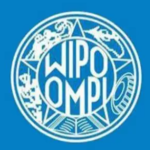Fees for registering Singapore trademarks
Service Process
Trademark registration time
The current trademark regulations in Singapore are mainly based on the Trademark Act, which came into effect on January 15, 1999. The Intellectual Property Office of Singapore is responsible for managing trademark affairs, and the official language is English. Trademark exclusive rights need to be obtained through registration. Trademark registration is not mandatory, but in order to protect the trademark or renew it, it must be registered in accordance with the law. The trademark registration in Singapore adopts the principle of "application first", but in some cases, trademark rights can also be claimed based on "prior use".
Singapore is a party to international intellectual property treaties such as the Paris Convention, Nice Agreement, WIPO Convention, and TRIPS Agreement, and is a member of the Madrid Protocol. Therefore, trademark registration can be processed through "single country registration" or "Madrid International Registration".
Trademark Registration Process
At present, Singapore adopts its standard classification system for goods and services, and its goods or services are often more detailed than those in the Nice classification, accepting applications for multiple categories in one form. The elements that can be registered as trademarks in Singapore include: text, name, graphics, color, letters, numbers, sound, three-dimensional logo, etc.
If the applicant does not reside in Singapore, they must entrust a specialized agent in their home country to handle the matter. The basic materials required for trademark application are:
1. Trademark design;
2. Specific categories and product/service items;
3. Name and address of the applicant;
4.If priority is declared, priority proof documents and corresponding English translations must be provided.
The main process for applying for registration of a Singapore trademark is: application → acceptance → examination → announcement → approval → issuance of certificates. The application will be accepted in about 2-4 weeks after submission. The examiner will conduct formal and substantive examinations on the application. Formal review mainly examines whether the application requirements and classification information comply with regulations; The substantive examination includes the examination of the distinctiveness of the trademark, whether it violates the prohibition and prohibition clauses, and whether it conflicts with the prior trademark. If the examination fails, a rejection notice will be issued and the applicant will be required to respond within the time limit specified in the rejection notice. If the substantive examination passes, it will be arranged for public announcement.
Two months from the announcement date is the objection period, during which any interested party or prior rights holder may raise objections. The main reasons for raising objections are:
1. Conflict with prior trademarks, such as owning a prior registered trademark;
2. The trademark lacks distinctiveness;
3. The trademark has adverse effects;
4. Malicious registration;
5. Conflict with other prior rights, such as trade name rights, design rights, copyrights, personal names, etc.
If there are no objections or objections are not valid during the announcement period, registration can be approved and a registration certificate can be issued. If everything goes smoothly, trademark registration in Singapore will take about six months;
If things don't go smoothly and there are objections or rejections along the way, the time will be greatly extended.
Trademark registration materials
The Singapore trademark is valid for 10 years after registration, starting from the date of application; Renewal can be processed 6 months before the expiration date, with a grace period of 6 months; The renewal is valid for 10 years.
The invalidation or revocation application after trademark registration can generally be filed based on the following reasons:
1. Violating relevant laws and regulations;
2. Malicious registration;
3.If a trademark has not been actually used in that country for five consecutive years after registration, anyone may apply for revocation; Except for force majeure.
Trademark revocation applications can be filed with the Intellectual Property Office of Singapore or the High Court, and under current examination conditions, it generally takes 2-3 years. The respondent can generally provide the following evidence materials to respond to the revocation application filed by others on the grounds of "not used":
1. Invoice; Product catalog; Revenue evidence;
2. Packaging and decoration; label; quotation;
3. Advertising; Written statement; Market research results
Start Your Trademark Business
Start Registration

do not understand? Contact us

do not understand? Contact us

do not understand? Contact us

do not understand? Contact us


 Singapore
Singapore